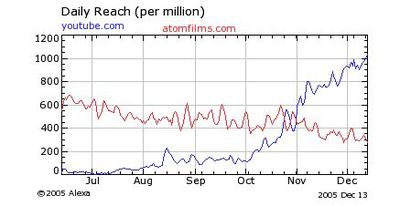
| Video Technology Magazine | March 2006 |
On February 23, 2006 the AP (Associated Press) (http://www.forbes.com/home/feeds/ap/2006/02/23/ap2549625.html) reported on a new TV campaign by KFC (Kentucky Fried Chicken). The commerical message, which started airing on the last weekend of the Olymipcs, contained a secret code that allowed the viewer to receive a free 99-cent Buffalo Snacker Chicken Sandwich. The catch is the to see the "secret code" a viewer must use a VCR or DVR to videotape, then playback the commercial frame by frame.
NPR's All Things Considered reports

This is an excellent board for Machine Vision, Stereo Video, Time Lapse work, and of course CCTV Video Recording. $200 each, quanity pricing is available.
Video Clip Here For more info visit: http://www.Plastk.net Ultra High-Resolution Gaming Hub.
Center for Human-Computer Interaction at Virginia Tech - GigaPixel Project (similar to the NASA HyperWall)
 One of the things missing from the Linux Free Operating System world has been a solid music/sound editor. It would be great to have something on the level of Digidesign's (now Avid) Pro Tools.
One of the things missing from the Linux Free Operating System world has been a solid music/sound editor. It would be great to have something on the level of Digidesign's (now Avid) Pro Tools.
Thw Linux Multimedia Studio http://lmms.sourceforge.net/ is getting close.
There is a great article is currently being shown on LXer.com called Linux Mutlimedia Studio (LMMS) aka "sal likes a bit of techno".
The LXer article explains how to get it installed and gives a quick tutorial
on how to get started. There are plenty of cool features with LMMS that
are sure to impress. You can use percussion, preloaded samples,
and a variety of instruments. There is also a feature where one can
load in user made samples. Other linux sound editors are Freebirth & Reborn.
Freebirth is a free software bass synthesizer / step sequencer / sample player similar to Propellerhead Rebirth.
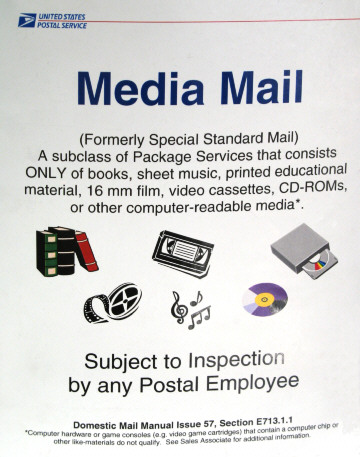
Click to enlarge A little searching shows Domestic Mail Manual Section E713.1.1 Basically Media Mail allows you to send Media as a much lost cost, assuming you qualify. The thing that really caught my attention was "Subject to Inspection"! What does this mean exactly, Am I reading this correctly, they they can open my mail that I'm sending and read, play or view the contents? Is this just to verify the shipping rate, or what? What if it's something personal or private?
From the Forbes article,"Cisco made the acquisition to capitalize on the trend that has been underway which is moving video surveillance from analog to IP."
Cisco plans to integrate SyPixx's network video surveillance technology into new security applications that make live and recorded video available online.
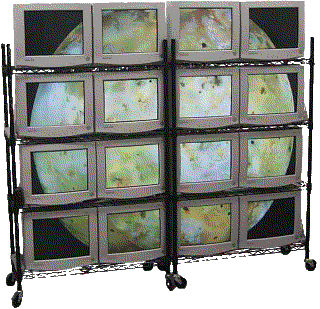
The University of Kentucky College of Engineering. KAOS and the Department of Electrical and Computer Engineering has been developing video Wall computer clusters, Very similar to the NASA Hyperwall. Compilers, Hardware Architectures, and Operating Systems. That's CHAOS. But since they are based in Kentucky they call them selves KAOS Read more at KAOS lab
Thanks very much to Will White for answering this. it's a TOPRO - TP2804 8051 Microcontroller with 64K Flash and ISP. Of course this make it's only a bigger mystery then since I don't see a DSP on that board??? Can someone tell me what this chip is and Who makes it? The maker looks like Topra or Topr4, but I can't find anything on google.
It's a Video DSP from a set top box, that will remain nameless, But it does H.264. It's probably from China or Taiwan.
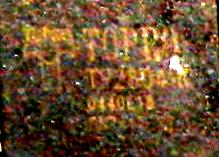
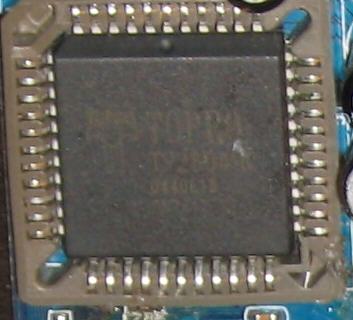
Digital-Video PCI Cards
FantASI USB-2 Adapters
Applications

Although numerous books about conventional filmmaking exist, none has solely addressed the challenges and production requirements of making stereoscopic motion pictures. Until now. Stereographer and film historian, Ray Zone, presents the insights of twenty-one professionals who have worked in this specialized field. In this unique collection of interviews, Zone explores the art and craft of 3-D filmmaking with producers, screenwriters, directors, and cinematographers. The interviews range from a discussion with Arch Oboler - producer of Bwana Devil, the 1952 feature that triggered the "boom" of 3-D films - to producers and cinematographers who have worked with single-strip 3-D film production in the 1970s and '80s, 3-D films in theme parks, current IMAX films, and the new and still evolving format of digital 3-D cinema. These interviews provide an unprecedented look at the unique challenges of producing stereoscopic motion pictures. Over five decades of this unique medium are covered, and will interest aspiring filmmakers, stereo photography enthusiasts, cinema buffs, devotees of popular culture, and film historians.
[18:04] mauro_chehab: tvtime accepts:
Video-on-Demand and Linux A match made in Hollywood
Entertainment's recent evolution to the on-demand business model is a driving force in the development of applications featuring increasingly efficient scheduling and larger memory models. The latest kernel versions of Linux deliver the performance needed for serving up huge amounts of widely varying content to the tens of thousands of simultaneous VOD users in a typical deployment. libmms - LibMMS aims to be common mms:// and mmsh:// (Microsoft streaming protocols) parsing library, licensed on LGPL, and thus usable by many projects that don't use GPL. DVB Decoder - Ever wanted to investigate the inner workings of a Digital Video Broadcast (DVB) stream? This programme allows you to analyse the tables and packets within a DVB Transport Stream either from a recorded file or live (dependant on hardware). 360 Media Server - A upnp media server designed for streaming M4A,Ogg and other non supported formats to the Xbox 360. Currently has support for streaming M4A,Ogg and MP3. Linux Infrared Remote Control - LIRC is a package that supports receiving and sending IR signals of the most common IR remote controls. It contains a daemon that decodes and sends IR signals, a mouse daemon that translates IR signals to mouse movements, and a couple of user programs. I Hear U - IHU is a VoIP application for Linux (using Qt and Speex), with low latency, crypted stream, minimal use of bandwith, and without intermediary servers. It is the easiest way to talk real-time with your friends (like phone) on the internet or LAN. ambulant - Ambulant is an extensible cross-platform multimedia playback engine in C++, aimed primarily at playback of SMIL documents. F4L - F4L is an open source development environment for Macromedia Flash, a multi-platform format(swf/svg) widely used for web applications and vector animation. Basically, you can make interactive eye candy for your web site or any other purpose. CED Self Proclaimed "The Premier Magazine of Broadband Technology" Using libavformat and libavcodec
|
ViVi is the VIrtual VIdeo Driver, that is a V4L2 linux video driver module intented to act as a real device driver but with no hardware. Right now it just play color bars with a Frame Counter and some TV snow in one corner. ViVi is intended to be an example stub driver for the newer 2.6.14 and later Linux Kernels, that can be used to develope USB camera drivers, IP Camera Drivers or even a video preprocessing driver to perform image processing before sending it to mplayer, Xawtv, VLC or any V4L/V4L2 application.
Lush supports Sound and video grabbing (using ALSA and Video4Linux). An interface to the Simple Directmedia Layer (SDL) multimedia library, A huge library of over 10,000 numerical routines, ibraries for computer vision (OpenCV, Intel's open source Vision Library), and 3D scene rendering (OpenInventor). Several libraries for machine learning, neural net, statistical estimation, Hidden Markov Models (gblearn2, Torch, HTK, SVM).
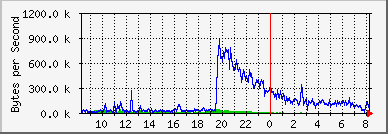
Slashdot effect is when a site is disabled from the huge influx of web traffic that often results from sites being mentioned on Slashdot.org
Youtube has also been acused of forming it's bussiness around Pirated Content by a number of people.
We'll it's finaly starting to get some respect. YouTube Ties Up Wth MTV; First Formal Media Company Agreement Comcast said it will launch the trial sometime in Q1 2006. The MSO did not name any deployment markets, but it reportedly completed a three-month VOD viewership study with Nielsen in Philadelphia. Nielsen said its On Demand platform will anonymously measure and report aggregate customer VOD usage data, information that will surely be of importance to advertisers that are considering whether to spend money on the new service. The trial "will extend our commitment to providing accurate and timely reporting of aggregate On Demand usage," said Page Thompson, Comcast's SVP and GM of video products, in a statement. Comcast, which offers about 3,800 titles on-demand, noted that it served up 1.4 billion VOD programs in 2005, more than double the total from 2004.
Comcast vs. YouTube VODTo Put this into perepective, YouTube at 25M per day, will end up searving 9.1 Billion VOD stream compaired to Comcast's 1.4B.. But to be fair YouTubes streams are lower bandwidth and on average probably under 5 minute clips while comcast is playing 2 hour movies. So in Terrabytes Comcast would blow YouTube out of the water, But Comcast over is it's DOCSIS private cable network; a much more controlled environment the the public Internet. Camcast is also RTP streams, while YouTube is HTTP file transfers.
The Free Software Foundation (FSF) announced earlier this year the addition of Gnash, a new open source Flash movie player and Firefox plugin, licensed under the GNU General Public License (GNU GPL). "Open source" indicates that developers can build on top of earlier software to add features or tweak the old ones. Until the forthcoming release of Gnash, all flash movies were only playable with Adobe Macromedia Flash player. While the Macromedia player is free, developers are restricted under copyright from modifying it. The Adobe flash player is supported on Intel X86 Linux but many platforms such as embedded processors are not supported.
FSF also says that while there are other free Flash (SWF
format) players out there, none support newer than v4 versions. Gnash
is based on GameSWF and supports many SWF v7 features.
The maintainer of Gnash Rob Savoye says that Gnash is playing more movies than any of the other free players, but needs more development support to improve its performance. "All ActionScript classes exist and work, but not all the methods of each class are fully implemented," he said. "With a few more developers, it could be reasonably complete in a few months." The FSF, who owns the copyright, is reviewing the GPL and has listed Gnash as a top-six priority project. Savoye maintains that he is a clean developer and has not reverse-engineered code from Adobe's free product, developing Gnash from SWF format or Flash documentation on the Internet. The home page of the project is at http://www.gnu.org/software/gnash/. The Gnash development sources are accessible via anonymous CVS from Savannah. Gnash development is being funded by PubSoft. Other Similar ProjectsSwfdec LGPL - Flash Rendering Library, Doesn't do ActionScript and is part of GStreamer.GPLFlash is in the process of a ground-up rewrite. GameSWF, a game-development library that includes Flash support. GameSWF supported ActionScript and had the most complete feature set, implementing a large portion of the Flash 7 specification.
|
|||||||||||||||||||||||
Copyright © 2005, John L. Sokol
|
|


